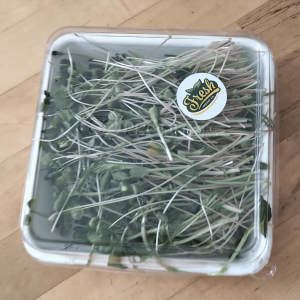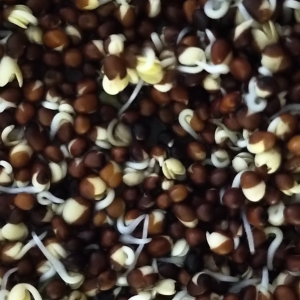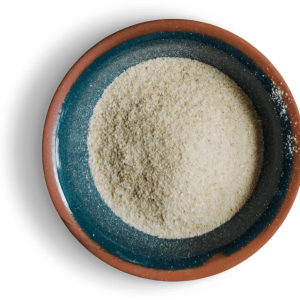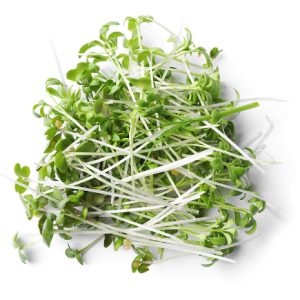Microgreens are tiny, young vegetable greens that are typically grown from the seeds of vegetables and herbs. They are usually harvested when they are just a few inches tall, at the cotyledon or first true leaf stage. Despite their small size, microgreens pack a powerful punch when it comes to their nutritional content and health benefits.
One of the main health benefits of microgreens is their high nutrient density. These tiny greens are packed with vitamins, minerals, and antioxidants that can help to support overall health and well-being. For example, microgreens have been found to contain higher levels of vitamins C, E, and K than their mature counterparts, as well as higher levels of minerals like iron, calcium, and potassium.
In addition to their high nutrient content, microgreens have also been found to have various other health benefits. For instance, research has shown that microgreens may have anti-inflammatory properties, which may help to reduce the risk of chronic diseases like heart disease, diabetes, and cancer. They may also have the potential to improve gut health by promoting the growth of beneficial bacteria in the digestive tract.
One specific type of microgreen that has received a lot of attention in recent years is broccoli microgreens. These micro greens are particularly high in sulforaphane, a compound that has been shown to have potent antioxidant and anti-inflammatory properties. Some studies have suggested that sulforaphane may help to reduce the risk of certain types of cancer, including breast, colon, and prostate cancer.
Broccoli microgreens are tiny, young vegetable greens that are harvested from the seeds of broccoli plants. They are usually harvested when they are just a few inches tall, at the cotyledon or first true leaf stage. Despite their small size, broccoli microgreens pack a powerful punch when it comes to their nutritional content and health benefits.
One of the main health benefits of broccoli microgreens is their high nutrient density. These tiny greens are packed with vitamins, minerals, and antioxidants that can help to support overall health and well-being. For example, broccoli microgreens have been found to contain higher levels of vitamins C, E, and K than mature broccoli, as well as higher levels of minerals like iron, calcium, and potassium.
In addition to their high nutrient content, broccoli microgreens have also been found to have various other health benefits. For instance, research has shown that broccoli microgreens may have anti-inflammatory properties, which may help to reduce the risk of chronic diseases like heart disease, diabetes, and cancer. They may also have the potential to improve gut health by promoting the growth of beneficial bacteria in the digestive tract.
One specific compound that is found in high levels in broccoli microgreens is sulforaphane. Sulforaphane is a potent antioxidant and anti-inflammatory compound that has been shown to have a variety of potential health benefits. Some studies have suggested that sulforaphane may help to reduce the risk of certain types of cancer, including breast, colon, and prostate cancer. It may also have the potential to improve heart health by reducing inflammation and oxidative stress in the body.
In addition to their potential health benefits, broccoli microgreens are also very versatile and can be easily incorporated into a variety of dishes. They can be used as a garnish, added to salads, sandwiches, and wraps, or used as a topping for soups and grains. They can also be juiced or blended into smoothies for an extra nutrient boost.
Another type of microgreen that has received attention for its potential health benefits is radish microgreens. Radish microgreens are high in antioxidants and have been found to have antibacterial properties. They may also have the potential to lower blood pressure and improve heart health.
Radish microgreens have also been found to have various other health benefits. For instance, research has shown that radish microgreens may have anti-inflammatory properties, which may help to reduce the risk of chronic diseases like heart disease, diabetes, and cancer. They may also have the potential to improve gut health by promoting the growth of beneficial bacteria in the digestive tract.
Radish microgreens have also been found to have antibacterial properties, which may make them useful for preventing or treating bacterial infections. They may also have the potential to lower blood pressure and improve heart health.
In addition to their potential health benefits, microgreens are also very versatile and can be easily incorporated into a variety of dishes. They can be used as a garnish, added to salads, sandwiches, and wraps, or used as a topping for soups and grains. They can also be juiced or blended into smoothies for an extra nutrient boost.
Overall, microgreens are a nutritious and tasty addition to any diet. They are easy to grow and can be grown year-round, making them a convenient and sustainable source of nutrients. So next time you’re looking to add a little extra nutrition to your meals, consider giving microgreens a try!















